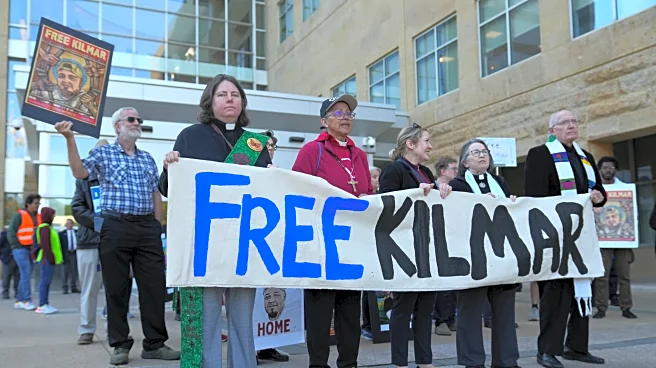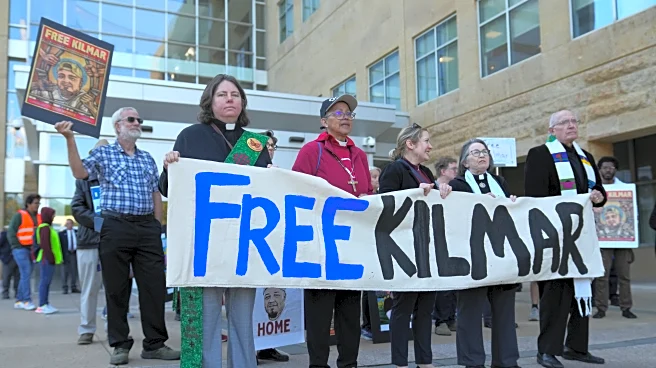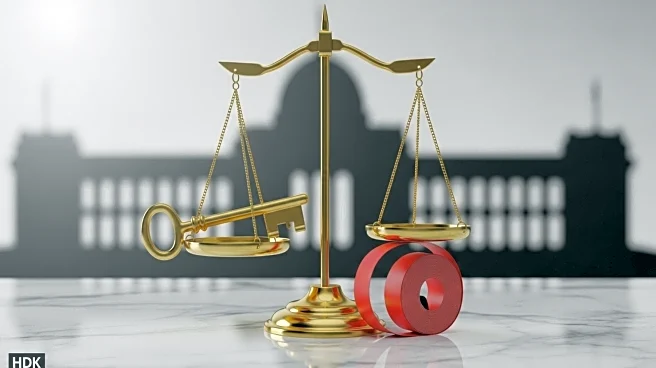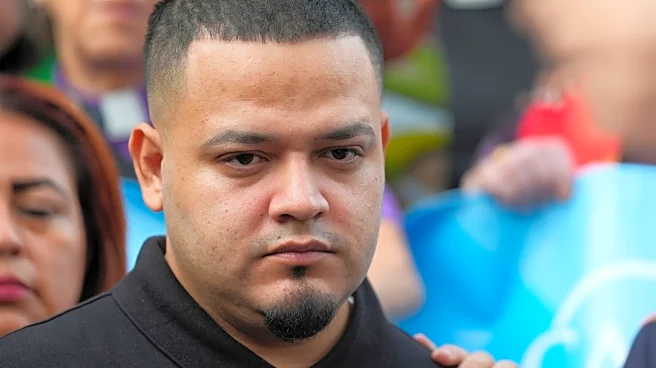What is the story about?
What's Happening?
The Trump administration has asserted that Kilmar Abrego Garcia, a Salvadoran national, is a member of the MS-13 gang based on tattoos on his fingers. These tattoos include symbols such as a cross, a skull, a smiley face, and a marijuana leaf. However, gang experts have refuted this claim, stating that these symbols do not definitively indicate gang membership. The White House had previously posted a digitally altered image of Garcia's tattoos, adding letters and numbers to suggest gang affiliation. Despite these claims, experts argue that MS-13 tattoos are typically explicit and serve as a form of branding for the gang's members. Garcia's family and attorneys deny any gang association, and experts emphasize that tattoos alone are not sufficient evidence of gang membership.
Why It's Important?
This situation highlights the complexities and potential pitfalls in identifying gang affiliations based solely on tattoos. The Trump administration's stance could have significant implications for immigration policy and the treatment of individuals suspected of gang involvement. Misidentification can lead to wrongful deportations and legal challenges, affecting the lives of individuals and their families. The broader impact includes potential shifts in public perception and policy regarding gang-related deportations, emphasizing the need for accurate and fair assessments in legal proceedings.
What's Next?
The controversy surrounding Garcia's deportation and alleged gang affiliation may lead to further legal challenges and calls for a fair trial. Garcia's attorney has advocated for his return to the U.S. to face a proper legal process. This case could prompt discussions on the criteria used to determine gang membership and influence future immigration policies. Stakeholders, including legal experts and civil rights groups, may push for reforms to ensure that deportation decisions are based on reliable evidence.
Beyond the Headlines
The use of tattoos as indicators of gang membership raises ethical and legal questions about profiling and discrimination. This case underscores the importance of context in interpreting symbols and the potential for misinterpretation. It also highlights the role of media and digital manipulation in shaping public narratives and policy decisions. The broader cultural implications involve understanding the significance of tattoos in gang culture and the risks of oversimplification in legal contexts.
AI Generated Content
Do you find this article useful?














